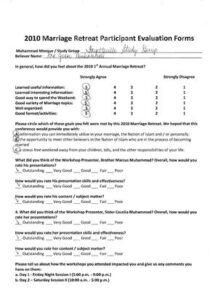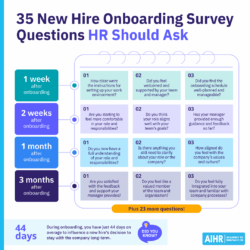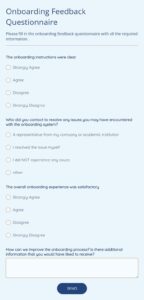Training sessions are a big investment for any organization, whether it is upskilling your current team or onboarding new hires. You pour resources into developing content, scheduling, and delivering these valuable learning experiences. But how do you truly know if all that effort is paying off? The real gold lies in understanding how your participants felt about the training, what they learned, and how it could be even better next time. This is where collecting feedback becomes absolutely essential.
Imagine spending countless hours creating a fantastic workshop, only to find out later that the pace was too slow, or a crucial topic was missed entirely. Without a clear feedback mechanism, you are essentially flying blind. A well structured survey template for training feedback can be your compass, guiding you towards more impactful and effective learning initiatives. It helps you pinpoint what worked well, identify areas for improvement, and ultimately ensure your training investments yield the best possible returns.
Crafting the Perfect Training Feedback Survey
Creating a truly effective training feedback survey is an art. It is not just about asking a few generic questions, but rather about thoughtfully designing a tool that captures actionable insights. A great survey dives deep, providing a holistic view of the training experience from multiple angles. It ensures that every aspect, from the content to the delivery and logistics, is scrutinized to help you refine future programs.
Think about what you really want to learn. Do you want to know if the content was relevant? If the instructor was engaging? If the learning environment was conducive to understanding? Your survey should be comprehensive enough to cover these key areas without becoming overly long or tedious for the participants to complete. A balanced approach ensures you gather rich data without causing survey fatigue.
Essential Sections to Include
- Participant Information Understanding who your participants are helps segment data later.
- Course Details Confirming the specific training module or session they attended.
- Content Quality Was the material relevant, accurate, and easy to understand?
- Instructor Effectiveness How clear, engaging, and knowledgeable was the trainer?
- Learning Outcomes Did participants achieve the stated learning objectives?
- Logistics Was the timing, location, and technical setup appropriate?
- Overall Satisfaction A general rating of the entire training experience.
- Open Comments Providing space for qualitative feedback and suggestions.
When formulating your questions, aim for clarity and objectivity. Use a mix of rating scales for quantitative data and open ended questions for qualitative insights. For example, instead of just “Was the training good,” ask “On a scale of 1 to 5, how relevant was the training content to your job responsibilities?” followed by “Please explain why you gave this rating and provide specific examples if possible.” This mix gives you both measurable data and rich context.
Leveraging Your Survey Template for Continuous Improvement
Collecting feedback is only the first step. The real power of a well designed survey template for training feedback lies in how you analyze and act upon the information gathered. This is where the magic happens, transforming raw data into actionable strategies that elevate your training programs from good to great. Without a systematic approach to review and implement changes, even the most detailed feedback becomes merely data for data’s sake.
Once the responses start rolling in, dedicate time to thoroughly review them. Look for trends, recurring themes, and standout comments. Are multiple participants pointing out the same issue with a specific module or a particular delivery style? Are there common praises that highlight your strengths? Identifying these patterns is crucial for understanding what adjustments need to be made and where your current strengths lie.
Consider creating a summary report that highlights key findings. This report can be shared with instructors, content developers, and management to ensure everyone is on the same page regarding the effectiveness of your training initiatives. Transparency and shared understanding foster a collaborative environment focused on growth and excellence.
Here are some actionable steps to take after collecting feedback:
- Review and Categorize Systematically read through all responses, grouping similar feedback.
- Identify Trends Look for common themes, both positive and negative, across multiple surveys.
- Share Insights Present key findings to relevant stakeholders, including trainers and content creators.
- Implement Changes Based on feedback, revise content, adjust delivery methods, or improve logistics.
- Communicate Results Let participants know how their feedback contributed to improvements, fostering trust.
Ultimately, leveraging your feedback effectively creates a virtuous cycle of continuous improvement. Each training session becomes an opportunity not just to teach, but also to learn about your teaching. This commitment to ongoing refinement ensures that your training programs remain relevant, engaging, and highly effective, consistently delivering value to your participants and the organization as a whole.
By regularly collecting and acting on feedback, you transform your training from a one off event into a dynamic, evolving process. This proactive approach ensures that every learning opportunity is optimized for maximum impact, fostering a culture of continuous development and empowering your team members to reach their full potential. The effort invested in gathering these insights truly pays dividends, leading to more engaged learners and better outcomes for everyone involved.



